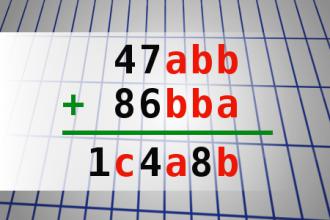Find number abc
If 47abb + 86bba = 1c4a8b find number abc. Multiple solutions may exist.Correct answers: 64
The first user who solved this task is Djordje Timotijevic.
#brainteasers #math

Man of The House
Tony had just finished reading a new book entitled, 'You Can Be The Man of Your House.'
He stormed to his wife in the kitchen and announced, 'From now on, you need to know that I am the man of this house and my word is Law. You will prepare me a gourmet meal tonight, and when I'm finished eating my meal, you will serve me a sumptuous dessert.
After dinner, you are going to go upstairs with me and we will have the kind of sex that I want. Afterwards, you are going to draw me a bath so I can relax. You will wash my back and towel me dry and bring me my robe.
Then, you will massage my feet and hands. Then tomorrow, guess who's going to dress me and comb my hair?'
His Sicilian wife Gina replied, "The funeral director would be my first guess."

